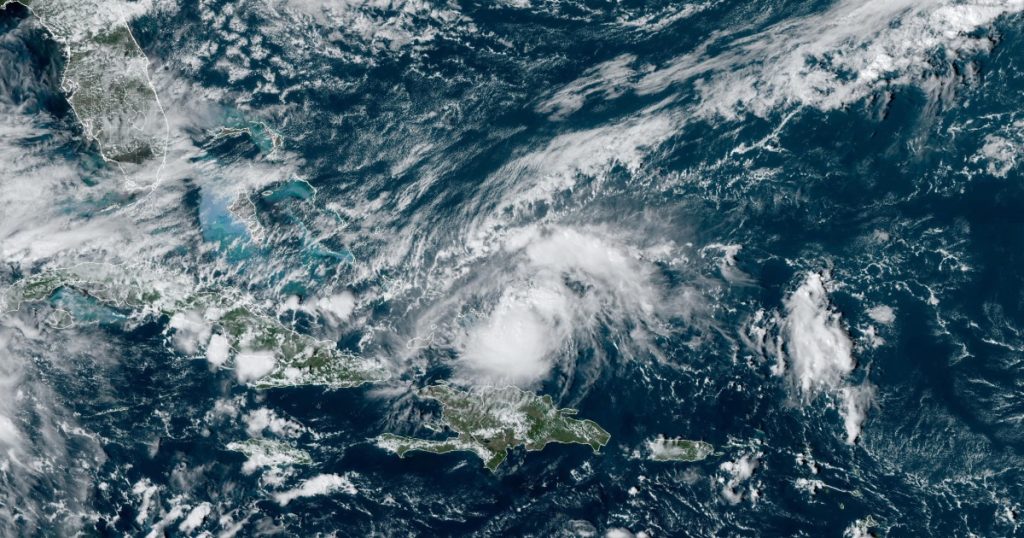Hurricane Oscar made landfall on the northern coast of east Cuba, near the city of Baracoa, with maximum sustained winds near 80 mph. The compact but powerful Category 1 storm formed off the coast of the Bahamas and prompted a hurricane warning for the north coast of Cuba’s Holguin and Guantanamo provinces. Oscar was moving west-southwest at 7 mph and was expected to move across eastern Cuba on Sunday night into Monday before accelerating northeastward across the central Bahamas on Tuesday. Although Oscar was expected to weaken after landfall, it could still be a tropical storm when it moves north of Cuba late Monday and across the central Bahamas on Tuesday.
Cuba was already facing challenges due to dayslong outages following grid failures, and the country was preparing for the impact of Hurricane Oscar with storm warnings and watches. In addition to hurricane warnings on the Cuban provinces of Holguin and Guantanamo, the north coast of the province of Las Tunas was under both a hurricane watch and tropical storm warning. The southeastern Bahamas and south coast of Guantanamo were under a tropical storm warning, while the north coast of the province of Camaguey was under a tropical storm watch. Eastern Cuba was expected to experience hurricane conditions and heavy rainfall on Sunday night, with rainfall reaching 5 to 10 inches and up to 15 inches in some areas. The southeastern Bahamas could see 3 to 8 inches of rain, while Turks and Caicos may receive 2 to 4 inches of rain by Wednesday morning. Storm surge of 1 to 3 feet along Cuba’s north shore, accompanied by large and destructive waves near the coast, was also expected.
As Hurricane Oscar moved across eastern Cuba and towards the central Bahamas, the National Hurricane Center advised that weakening was expected after landfall, but the storm could still be a tropical storm as it moved north of Cuba and across the central Bahamas. The storm was forecasted to bring heavy rainfall, strong winds, storm surge, and large waves to the region, impacting not only Cuba but also the southeastern Bahamas and Turks and Caicos. The Cuban provinces of Holguin, Guantanamo, Las Tunas, and Camaguey were under various storm warnings and watches, urging residents to take precautions and prepare for potential hazards.
Residents in the path of Hurricane Oscar were advised to stay informed about the storm’s progress and heed any evacuation orders or warnings issued by local authorities. The hurricane center continued to monitor the storm’s movement and intensity, providing regular updates on the forecasted impacts and potential risks posed by the storm. With the possibility of strong winds, heavy rainfall, and storm surge, residents were urged to take necessary precautions, secure outdoor belongings, and prepare emergency supplies in case of power outages or other disruptions. The storm surge and large waves were expected to bring coastal flooding and erosion to vulnerable areas along the north shore of Cuba, further increasing the potential for damage and hazards.
Efforts were underway to prepare for the aftermath of Hurricane Oscar, with emergency response teams on standby and relief supplies being positioned in strategic locations to assist communities impacted by the storm. The Cuban government and international aid agencies were coordinating response efforts to ensure the safety and well-being of residents affected by the storm. As the storm continued to track northeastward across the central Bahamas, residents in the region were urged to remain vigilant and follow safety guidelines provided by authorities to minimize the risks and potential impacts of the storm. Despite the challenges posed by the storm, efforts were being made to mitigate its effects and support the recovery and rebuilding process in affected communities.


